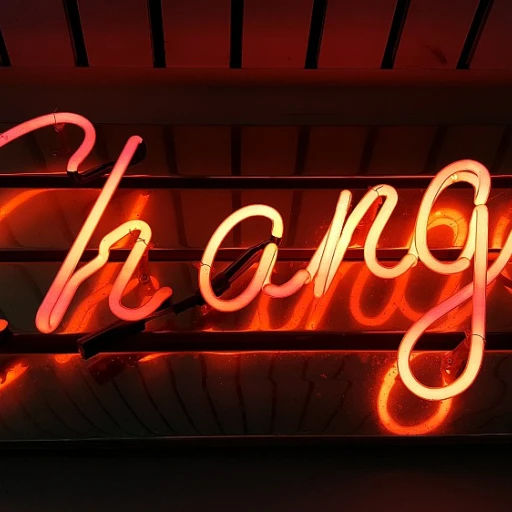Defining Implicit Bias
Unveiling the Unconscious Mind: A Glimpse into Implicit Bias
Implicit biases are hidden mental shortcuts that affect our judgments and decisions without conscious awareness. These unconscious biases are not only prevalent but also influential in shaping our behavior and attitudes toward different groups, impacting the diversity and inclusion efforts in the workplace. Unfortunately, biases often develop early in life through social conditioning and exposure to stereotypes, affecting the way we perceive gender, race, age, and other factors. Recognizing and understanding the existence of implicit bias is the first step toward diversity equity and inclusion (DEI) in the workplace. Equity inclusion initiatives often include bias training and awareness programs to reduce the adverse effects of these biases. Mental health professionals stress the importance of addressing implicit biases to ensure inclusive workplace practices, fair job descriptions, and strategies that enhance team cohesion and decision-making processes. Despite good intentions, implicit racial and gender biases can inadvertently influence recruitment and hiring practices. Health care and public health sectors, for instance, have shown how implicit biases can impact patient care and outcomes, especially among women and older adults. By diving deeper into the understanding of implicit biases, we can foster a culture that promotes equity, mental health care, and best practices for an inclusive work environment.The Role of DEI in Addressing Bias
An Integrated DEI Framework
The Diversity, Equity, and Inclusion (DEI) framework plays a central role in addressing the complexities of implicit biases present in today’s workplaces. As organizations strive to foster more inclusive environments, it becomes crucial to integrate DEI principles to effectively counteract these unconscious biases. Embracing diversity and equity requires more than superficial changes; it demands a conscious commitment to transform workplace cultures deeply entrenched in implicit biases. Teams aiming to reduce such biases must leverage health and mental health considerations, ensuring that all group members feel supported and valued. Moreover, implementing DEI strategies means advocating for a diverse work environment where gender, age, and racial biases are acknowledged and addressed. This approach allows organizations to identify gaps in equity inclusion, offering a comprehensive pathway to evolve effectively. A commitment to continuous training and awareness is paramount. Training programs must not only focus on recognizing explicit biases but also emphasize the often-overlooked implicit and unconscious biases that influence decision making. Introducing comprehensive bias training can significantly improve patient care and overall workplace dynamics. Ultimately, businesses leveraging a DEI perspective not only promote inclusion but also enhance their ability to devise strategies reduce biases, fostering an environment where all employees can thrive.Impact on Recruitment and Hiring
Exploring Unconscious Bias in Hiring Practices
In recruitment and hiring, implicit biases often subtly influence decision-making, impacting which candidates progress through the selection process. These biases can manifest in various forms, ranging from gender and racial bias to age-related stereotypes, affecting diversity, equity, and inclusion goals. Identifying invisible barriers to diversity:- Job Descriptions: Language in job descriptions can unintentionally appeal to certain groups, potentially deterring women or older adults from applying. A DEI-focused review of job descriptions is necessary to encourage a wider range of applicants.
- Resume Screening: Automated systems may inadvertently favor historically dominant groups if algorithms contain embedded, unconscious biases.
Training and Awareness Programs
Building Awareness and Skills to Combat Bias
Training and awareness programs play a pivotal role in addressing implicit biases, such as racial or gender bias, within organizations. These initiatives are designed to challenge unconscious biases and help employees develop a more inclusive mindset, contributing to a healthier and more equitable workplace. One effective approach is the implementation of bias training sessions, which aim to educate employees about the existence and impact of implicit bias. These sessions promote the understanding of unconscious bias and encourage reflection on decision-making processes, particularly in hiring and team interactions. Moreover, fostering an inclusive work culture requires continuous learning and open dialogue among team members. Training programs should cover a range of topics, including diversity, equity, and inclusion (DEI) concepts, strategies to reduce bias, and practical exercises that support the application of these concepts in real-life scenarios. By equipping employees with the knowledge and skills needed to recognize and counteract their biases, organizations can foster more inclusive practices and relationships in the workplace. Additionally, addressing biases through training helps in enhancing mental health and well-being among employees by creating an environment where equity and inclusion are prioritized. When individuals feel valued and understood, it leads to improved job satisfaction and performance. It's crucial for organizations to regularly update training materials to include the latest best practices and findings from data analytics, ensuring the relevance and effectiveness of their programs. Furthermore, careful consideration of job descriptions and hiring processes is essential to minimize biases. Training on these fronts can help HR teams make fairer and more informed decisions when evaluating candidates, ultimately supporting diversity in the workplace. In doing so, companies can create a more dynamic and innovative workforce, paving the way for sustainable growth and success in a competitive business world.Data-Driven Approaches to Mitigate Bias
Leveraging Data Analytics to Address Implicit Biases
Incorporating data-driven approaches to tackle bias, particularly implicit biases, plays a crucial role in fostering an inclusive and equitable workplace. Through the use of data analytics, organizations can uncover patterns and trends that might otherwise remain hidden, ensuring that decision-making processes are as fair and unbiased as possible.- Understanding Data Points: Data analytics offers insights into areas like recruitment, promotion rates, and employee engagement. By analyzing this data, companies can identify disparities or biases, be they racial, gender, or age-related, that may affect certain groups.
- Job Descriptions and Recruitment: With data, we can refine job descriptions and recruitment methods. For instance, detecting biased language in job descriptions and replacing it with gender-neutral terms can help attract a more diverse applicant pool.
- Monitoring Mental Health and Well-being: By tracking trends related to workplace mental health, organizations can identify whether certain groups face higher levels of stress or discrimination. Implementing changes based on these insights can improve the overall workplace environment, contributing to employee health and retention.
- Evaluating Equity Inclusion Practices: Data can show how well equity inclusion initiatives are doing. Regularly reviewing these outcomes helps in adjusting strategies to better meet the goals of diversity and inclusion.
- Driving Continuous Improvement: Utilizing a data-driven approach ensures continuous monitoring and improvement. Communicating results and progress fosters transparency and accountability among teams, embedding equity and inclusion into the culture.
Case Studies and Best Practices
Real-World Examples of Overcoming Bias
In the journey towards a more inclusive workplace, several organizations have taken significant steps to address implicit biases. These efforts not only enhance diversity but also improve overall team dynamics and job satisfaction. Here are some noteworthy examples and best practices:
- Health Care Sector: A leading health care provider implemented unconscious bias training for all employees, focusing on patient care and decision making. This initiative aimed to reduce implicit racial biases and improve equity in health outcomes. The training emphasized the importance of recognizing unconscious biases and their impact on patient interactions.
- Tech Industry: A major tech company revamped its job descriptions to eliminate gendered language and other bias-inducing terms. By doing so, they aimed to attract a more diverse pool of applicants, particularly women and older adults. This change was part of a broader strategy to enhance diversity equity and inclusion in the workplace.
- Public Health Organization: This organization used data analytics to identify patterns of implicit biases within their hiring processes. By analyzing recruitment data, they were able to pinpoint areas where biases were most prevalent and implement strategies to reduce their impact, ultimately fostering a more inclusive environment.
Implementing Best Practices for Equity and Inclusion
Adopting best practices from successful case studies can be instrumental in creating a more inclusive workplace. Here are some strategies that organizations can consider:
- Comprehensive Bias Training: Regular bias training sessions can help employees become more aware of their unconscious biases. This training should be ongoing and integrated into the company culture to ensure lasting impact.
- Diverse Hiring Panels: Including diverse groups in hiring panels can help mitigate biases during recruitment and hiring processes. This practice ensures a variety of perspectives are considered when making hiring decisions.
- Equity Audits: Conducting regular equity audits can help organizations identify areas where implicit biases may be affecting workplace dynamics. These audits can guide strategic changes to promote greater inclusion and equity.
By learning from these examples and implementing best practices, organizations can make significant strides in addressing implicit biases, fostering a more inclusive and equitable workplace for all employees.








